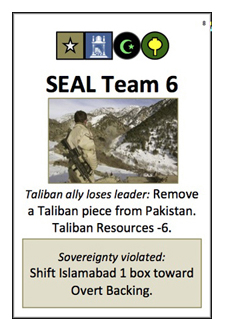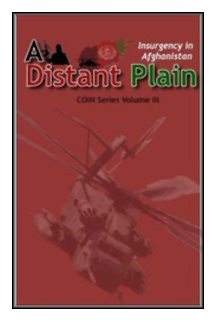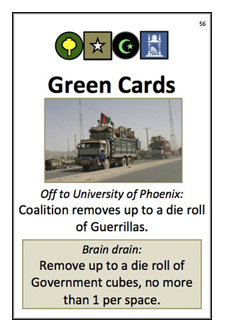 |
Keep Calm and Grog On! |
|
| Home | About Us | Article Index | Forums | Dice | GrogShop | GH ON FACEBOOK | GrogNews |
Let Your Grog Flag Fly!Recent ArticlesGARPA 17, 4/26/13 SimCity AAR Part 1, 4/25/13 Announcing MayViation, 4/24/13 Second Look at Wargame AirLand Battle, 4/21/13 First Look at Wargame AirLand Battle 4/19/13 AAR of Dark Age Minis Battle, 4/18/13 Video Review of Zulus on the Ramparts, 4/14/13 GARPA 16, 4/12/13 Crusader Kings II AAR Part 16, 4/11/13 Book Review: Ninja: 1000 Years of the Shadow Warrior, 4/10/13 Review of Bioshock INfinite, 4/7/13 Review of XFX PRO650W Core Edition PSU, 4/5/13 Civilization V AAR, Part 13, 4/4/13 Fire with Fire, 3/31/13 GARPA 15, 3/29/13 Civilization V AAR, Part 12, 3/28/13 Wheaton INterview, 3/27/13 March Mayhem Winner, 3/25/13 Warlock Multiplayer AAR, 3/21/13 WWII PTO Alternate Histories, 3/20/13 GARPA 14, 3/15/13 Crusader Kings II AAR, part 15, 3/14/13 Civilization V AAR, part 11, 3/7/13 Prezcon Convention Coverage, 3/2/13 Civilization V AAR, part 10, 3/3/13 |
Designers' Interview - A Distant Plain, part 2By Brant Guillory with Brian Train and Volko Ruhnke (designers), 29 August 2012Continuing our interview, part 2 of 2
GH: In many long-running conflicts, some actions don't have consequences for many years. Other actions have immediate consequences that may seem positive, but have overall negative long-term or second-order effects. How can a board game capture a long-term dynamic like this in a turn-by-turn situation? BT: Time is elastic. Turns in the game do not represent any fixed interval of time - a given turn could cover only a few weeks, or it could be most of a year, or both, depending on what is happening in different areas of the map. However, players will constantly be turning over in their minds both short and long-term decisions, and trying to assess what the “second-order” effects of these decisions will be. VR: I believe that the accumulation of long-term effect as well as unintended consequences are particularly salient features of insurgency and counterinsurgency. The COIN Series tries to bring such features out in a variety of ways. First, critical, cumulative effects are assessed at semi-random intervals via “Propaganda” cards that punctuate campaigns representing a year or two. Much player blow-by-blow during the campaigns aims to build toward the Propaganda round, to be able then to influence the population, garner resources, or perhaps even score a victory through an overwhelming position. Many individual player decisions also incorporate short- versus long-term objectives and gains, such as whether to crimp operational tempo with training effort or deployment of a unique capability. Finally, the nature of most event cards—each a dual option that players will have to expend effort in order to guide in the direction favorable to them—in part represent unintended consequences. BT: I think we’ve let the players provide a lot of this uncertainty for themselves as they try to plan – I think it’s better for them to feel they are the authors of their own success or misfortune, instead of laying it at the feet of scripted situation – but we have also built into most of the Event Cards a further set of choices that can help or hinder each side, either for the rest of the game (e.g. granting or denying certain capabilities) or for a shorter period.
GH: Elaborate some of the elasticity of time. Wargamers are used to fixed intervals, in large part because they’ve grown accustomed to “units move X distance in Y time” analyses of the forces involved, and those scope and shape the maps, units, everything about the game. How do you introduce a truly variable time element and still keep the players in a frame of mind that lets them make accurate and realistic decisions about what they can accomplish? VR: A way that some wargamers may relate to elasticity is how several Card driven games feature changing hand sizes over the course of a game even when beginning or end of hand sequences and mechanics remain the same. What is being represented here? Perhaps a side has more or fewer resources for a higher or lower ops tempo in the same time period. Or perhaps longer to shorter periods are represented by each succeeding hand. Combine that with the now common point-to-point wargame maps, where not all points have the same distance between them, but units expend one movement point per connection regardless. CDG designers are not always explicit about the intent, but apparently there is some elasticity involved. They are showing time and space related to other things in a looser (and possibly more elegant) way in these strategic and even operational level games than fixed intervals. I find this flexibility appropriate to the mindset of counterinsurgency. The decision makers don't really know how long or how much it will take to get the consequences they are after. "How long does it take to get my division from here to there?" is not really as interesting a question to model as, say, "How many resources will it take over how much time to convince that region's population to back the government?" The semi-random appearance of the next "Propaganda" card in ADP in part tries to incite that kind of uncertainty, the mindset of having to deal with that flexibly as a decision maker. BT: The kind of decisions players are making in the game are not the kind that involve moving X units in Y time, where X and Y are discrete units. When a player undertakes an operation like Sweep or Extort, it represents a concentration of resources or capability in a certain area over a non-fixed interval of time. A given cube or cylinder in the game does not represent a fixed unit like 3/187/101 "Rakkasans" or the "A-535 Martyr's Brigade" or anything like that. Also, there will be instances where there may be actual forces in an area but they are not particularly active or useful – for example, much of the Afghan National Army or Police agencies are present and deployed across the countryside, but are not engaged or likely to be engaged against the enemy. I think wargamers are a bit more forgiving of this concept now than before, but I acknowledge some people will not be able to let go of the idea either. So it goes.
BT: Well, if it is your first time sitting down to play the game, you are probably more interested in finding out how the game works, at least in the first few turns. But once you have mastered the mechanics, you can now concentrate on how to win. You must understand the victory conditions for every faction, and every decision you make should be interrogated as to how it serves YOUR win – keeping in mind that everyone else is doing the same, and it’s all too possible for someone to sail to victory up the middle while the other players are tearing each other to pieces. The game has no hidden information, except what is in the heads of the other players – and this can lead to a lot of internal “he knows that I know that he will want to do this, because last turn he did that, so I will do this other thing to upset him, now how does that help me” dialogue. VR: They are legion, but I’d focus on these: As the Coalition, a small or big footprint? The Coalition has wide control and strong incentive to manipulate force levels in country. A light commitment opens up the possibility of declaring victory quickly, while heavy commitment ensures a long campaign and exposure to mounting casualties. But Coalition forces are effective and needed to pursue objectives across much of the country; without a heavy commitment how will the Coalition guide any outcomes? As the Afghan Government, how closely to work with the Coalition and how hard to go after the Taliban, the Warlords, both, or neither? You’d like to keep the Coalition in country long enough for you to build up your wherewithal against their eventual departure. So you don’t want them to succeed too fast. On the other hand, you do want to impose the central Government’s writ, so you can’t allow the Taliban or the Warlords to grow too strong. And you know that tight Government-Coalition cooperation can be potent against these competitors. As the Taliban, how much to build up before striking and whether to focus on popular opposition to Karzai right away or first rack up some casualties among the occupier to block a Coalition victory? The Taliban are mostly secure across the Durand Line, somewhat so in Pashtun-dominant areas of Afghanistan, and less so elsewhere. Victory will require influence outside the safer areas, but it is possible to get behind the attrition 8-ball and never rally back to sufficient mass. As the Warlords, how to build up bases to produce resources and exert just enough influence to keep the other factions divided and not coming down on your head.
GH: When the player gets up for the game table after a rousing session playing A Distant Plain, what's the key takeaway you want them to have? BT: That this game helped him to see that the war is far more complicated than he thought, and that the real war in turn is far more complicated than this game, which has taken a great deal of liberty and abstraction with the subject. VR: That Afghanistan today is a particularly vexing example of Kilcullen’s dictum that counterinsurgency is fundamentally a competition between many groups, always more than two-sided.
BT: I think the situations you are describing would be essentially different games. The components of the game could be used to construct such, but the victory conditions and Event Card decks would need to be completely rewritten. So, no. I also do not think that there would have been a foreign military intervention in the late 1990s. Europe and the US were too concerned with events in the Balkans, Somalia and elsewhere, and as miserable as things might have been for Afghans in that decade, the rest of the world was not interested in rebuilding their nation for them, after twenty years of knocking things to pieces. VR: Another inhibition for me against doing expansions any time soon is that there are too many fresh topics that I am itching to do. I always love to see other folks come up with variants on something I have designed, but I myself can only do a few things at a time. After A Distant Plain is printed, I'll almost certainly turn to Angola, Iraq, and other topics before I return to Afghanistan.
GH: What would we ask you about if we knew what to ask you about? VR: Who’s developing the game? What’s planned for playtest of the design? And how do I get in on it? Mike Bertucelli—experienced playtester on my previous designs and current GMT developer for Joel Toppen’s Navajo Wars—is developing A Distant Plain with us. Gene wanted a single developer for the ongoing COIN Series, and happily for us Mike stepped up to the task. He has set up a first-rate playtest home on Google, while Joel has provided a gorgeous playtest Vassal module. Meanwhile, Connections grognards Bill Cirillo and Sean Diller already have an outside physical set in play. We welcome anyone willing to put the effort into providing us game reports and feedback to get in touch with Mike (“Hobiecat” on line) and get on board! BT: Where, oh where, can we see more about this game and how can we get our hands on it? Boardgamegeek.com has shots of game components and will feature more content as it is generated: Consimworld has both heartfelt debate and current events on the game’s progress: Preorder page on GMT website ($52 now, $78 later!)
Brian and Volko have graciously agreed to take questions from readers in our forums for about a week after this interview runs. Please drop in and ask away - they are insightful and articulate guys who will know doubt offer thoughtful responses to your queries. Or at least fake it really well! |
Please support the folks that support GrogHeads
|
Copyright ©2012-2019, Grogheads, LLC. All rights reserved in the United States and throughout the world. All other products and copyrights mentioned on Grogheads, LLC are the property of their respective companies, and Grogheads, LLC makes no claim thereto.
GrogDice - Refresh the screen to roll a new set!
Or go here to roll a LOT of dice

 GH: As a player first sitting down to the game, what are the key decisions I'm looking for, and how should I weigh my options when considering what actions to take?
GH: As a player first sitting down to the game, what are the key decisions I'm looking for, and how should I weigh my options when considering what actions to take? GH: Will there be any expansions / additions that allow players to either explore the situation in Afghanistan pre-9/11, such as the Afghan Civil War that followed the Soviet withdrawal, or an update in a few years that looks at the events from 2012-2014 or so? Or would those be significantly different games that would require a different approach? Is there value in introducing the idea that the US/coalition could’ve intervened in Afghanistan in the late-90s, without 9/11 as the triggering event?
GH: Will there be any expansions / additions that allow players to either explore the situation in Afghanistan pre-9/11, such as the Afghan Civil War that followed the Soviet withdrawal, or an update in a few years that looks at the events from 2012-2014 or so? Or would those be significantly different games that would require a different approach? Is there value in introducing the idea that the US/coalition could’ve intervened in Afghanistan in the late-90s, without 9/11 as the triggering event?